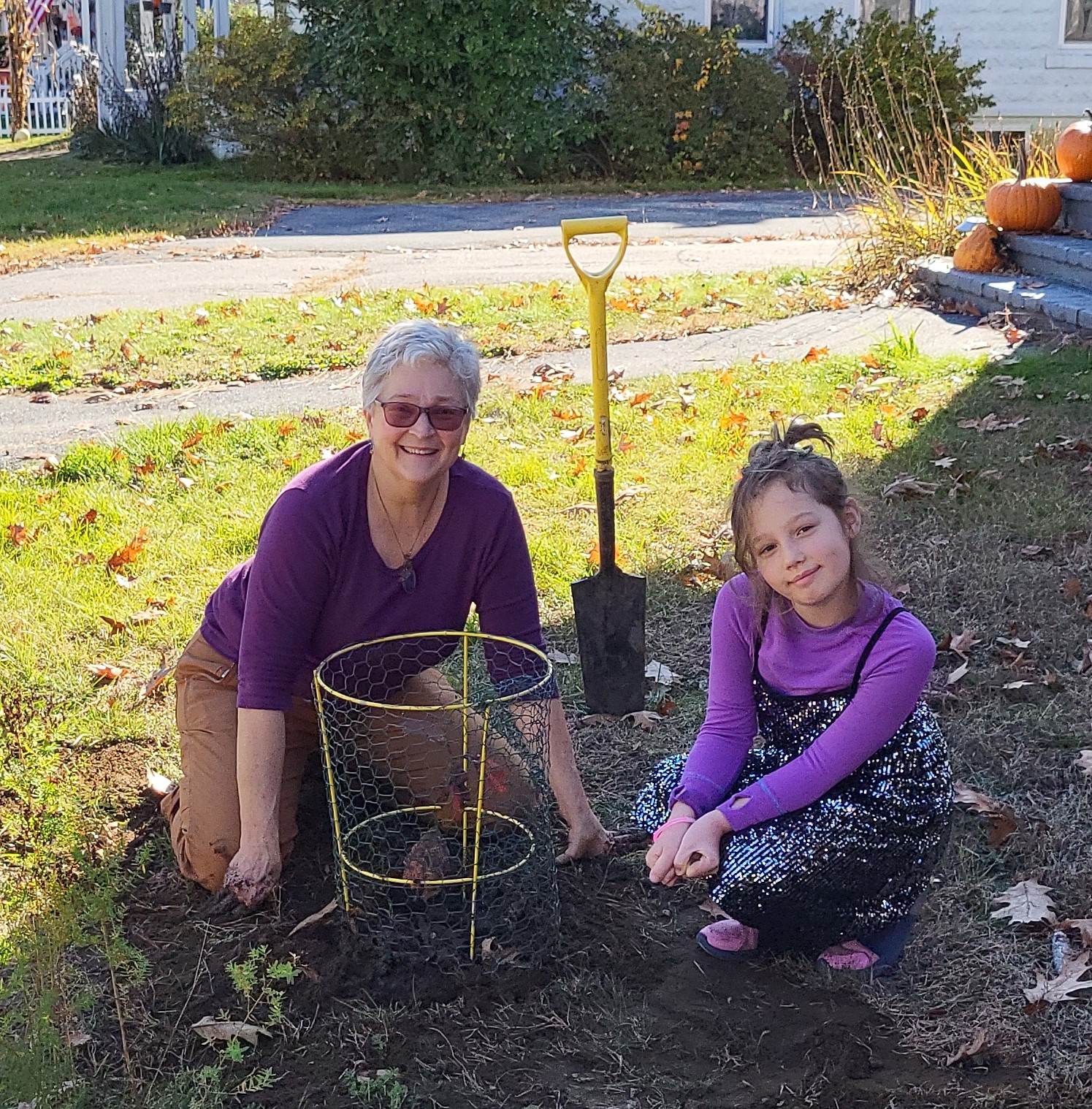Fall is a terrific time to make your home landscape more resilient to our climate changes.
Extreme Heat
Substantial shade and heat reductions of up to 10 degrees are just two of the twenty-two environmental benefits that mature, healthy, shade trees can offer at home. Fall is a great season to plant new, native tree saplings. Why Now? Fall’s cooler temperatures and increased rain combine to give new trees an entire spring growing season to establish before next summer’s heat stress. Why Native? Because native trees are adapted to our specific seasonal weather. Native trees are better able to tolerate even our hot temperatures and provide your best chances of thriving for many years. Why a sapling? Because tree saplings have fewer roots to be damaged by transplantation. Saplings can establish and grow more quickly. Even though they look tiny, make sure to plant these shade trees at least 20’ from your home’s foundation and at the same level they were grown.
Heavier rains
I bet this summer’s rains offered an opportunity to see how water moved in your landscape. Now is a great time to assess whether you would like to change aspects of your landscape to better handle and dare I say, take advantage of future heavy rains. Rain gardens can capture runoff from your roof or driveways, preventing soil erosion, recharging our aquifers, and filling your yard with pollinator plants. ‘Soak Up The Rain NH’ is a great program with excellent, online resources for creating your very own rain garden at home. Alternatively, one or several carefully sited and screened rain barrels can catch and store a great deal of our rooftop runoff. Rain barrels provide our HHH demonstration gardens with abundant water during our dry periods. This water has no chlorine, fluorine, or softening salts. Or maybe now is the time to consider adding the amazing ecological and psychological benefits of a wildlife pond to your landscape. No fish and no pump are needed for wildlife to benefit. I’m currently studying ideas from a terrific, short but thorough book titled ‘How to Build a Backyard Wildlife Pond’ by Therese Berrie, recommended by the esteemed author and ecologist Nancy Lawson.
Less Snow
Less snow means less protection from drying winter winds. A 3-4” ‘blanket’ of leaf mulch is one of the least expensive ways to protect your plants’ roots. Be sure to lay this mulch every fall and pull away the leaves from each plant’s crown or trunk. Why? Shredded leaf mulch, in particular, insulates your plants’ roots while providing them with slowly delivered nutrients as the leaves break down over time. How? Shredding the rest of your leaves is easy. Just mow dry leaves with your regular mower set at its highest setting. The resulting smaller leaf pieces reduce the ability of wind to move these leaves once they are placed in your landscape areas. Be sure to protect butterfly cocoons and chrysalis by not mowing leaves within the drip lines of your Oak or Cherry trees. Less snow also means less moisture. Planting drought-resistant perennials, shrubs, and trees is another strategy that can result in substantial cost savings over time. The Native Plant Trust in Framingham MA, and its Nasami Nursery, Whately, MA are wonderful online and in-person resources for discovering which drought-resistant, native plants will prosper gloriously in your landscape.
Fall can be the quieter time to reflect on and potentially choose one or more of these suggested changes. Both your plants and your peace of mind will benefit as your landscape becomes more resilient, better able to remain amazing havens for your family, pollinators, season-long blooms, fabulous fall colors, and wildlife habitats.
NOTES:
www.treepeople.org/22-benefits-of-trees/
Nancy Lawson’s Books: ‘The Humane Gardener’ and ‘Wildscape: Trilling Chipmunks, Beckoning Blooms, Salty Butterflies, and other Sensory Wonders of Nature’
Michele Chalice is a former licensed Landscape Architect and owner of Healthy Home Habitats (HHH). Watch for HHH’s public programs and workshops in the Monadnock region. Hire HHH to create a home landscape of more color, more native plants, less turf grass, and more joy. LIKE and FOLLOW HHH on FB and IG for more ecologically-restorative, home landscape stewardship tips. 603-313-9153, hhhabitats@gmail.com
This article first appeared in the September 13, 2023 Monadnock Shopper News.

